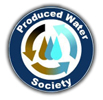The Situation
Hydroelectric dams produce electric power by harnessing the force of the water flowing through the dam. There are numerous sources for oil spillage:
- The hydroelectric turbines are lubricated by lubrication oils.
- The very large water control valves are normally hydraulic powered and are lubricated with various greases and oils.
- Vehicles including fork lifts, trucks, etc., can spill oils and fuels.
Any accidental spillage of oil or grease or intentional wash down water containing minor amounts of oils, greases, and detergents must be collected and treated before discharge to the river. These fluids along with any water leaks are collected in sumps in the dam and are regularly pumped out. In many cases, the volume of water is substantial.
The Problem
To protect the river environment, the sumps at some advanced locations have oil in water separation systems and oil in water monitors. The installation of a TD-4100 series monitor in these applications is very simple. All that is needed is a properly plumbed sample stream and a way to drain the water back to the sump. A dry air supply is also needed to prevent fogging within the non-contact falling stream flow cell.
The Solution
The TD-4100XD, with its UV fluorescence technology and non-contact flow cell, has very strong advantages over any other oil in water monitor for this application. They are:
- Very high sensitivity to oils in river water—50 ppb is typical. No other oil in water monitor can claim this level of sensitivity. High sensitivity allows end users to set alarms well below discharge limits and make corrections to their pumping sequence or to their treatment system. Competing UV fluorescence monitors cannot detect below 1 ppm, and light scatter instruments cannot operate if there are no oil droplets to scatter the light.
- Very low sensitivity to suspended solids—Typical river water coupled with wash down and drainage water from the dam will have a fair amount of suspended solids. Suspended solids are the downfall of any light scatter instrument because they register a positive signal even when there is no oil present. Note that the TD- 4100 can make measurements with turbidity as high as 800 NTU (turbidity units) with less than a 10% change in the reading from distilled water.
- Very low maintenance—The only maintenance issue is very fine silt that may settle in the pipe-work. This includes the pipe-work feeding the instrument as well as the bubble trap. Our customers have found that a periodic flush of the lines with filtered fresh water is sufficient to keep the lines maintenance free.
- Sample pour through feature—Using the standard supplied calibration bottles, the end user can take water samples from various locations within the dam structure to provide an instant check for the presence of oil. The water samples are simply poured through the bubble trap and the concentration is displayed on the screen.



